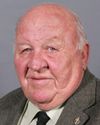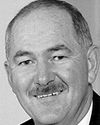Mr. Speaker, the motion before us introduced by the member for Surrey-White Rock-South Langley is important. It touches an issue of concern to all Canadians.
This House must weigh carefully the response to be given these issues of sexual offences. The aim of the motion by my distinguished colleague from the Reform Party is to ensure that, in cases of aggravated sexual assault, the offender is examined by two psychiatrists to determine the likelihood of his committing another such offence.
If they determine there is such a likelihood, this person would be declared a dangerous offender and would not be released so long as they posed any threat to society.
On March 25, 1996, our distinguished colleague from the Reform Party said in this House: "This motion is a response to the demands of Canadians who are fed up with the failure of our justice system to protect women and children". The problem I see is that, despite the good and necessary intention of the Reform member, the effect of her reform would be the opposite to what she intended.
Listen carefully. Psychiatrists are human. They work in an area where things are never black and white. In mathematics, one and one make two. In engineering, the combination of two forces leads to a predictable and measurable result. When humans are involved, rarely do the specialists agree entirely. Should the motion put forward by our distinguished colleague from the Reform Party pass and the Criminal Code be amended accordingly, we would then find ourselves in the situation where the judge would have to make his decision on the basis of the opinions of two psychiatrists. Even then, these opinions would need to be agreement.
Let us imagine for a moment that one of the psychiatrists concludes as follows: "I have every reason to believe that this person will relapse into crime", while the other one comes to a different conclusion: "This person might relapse, but I am not sure. I have a doubt". In such cases, the judge would have no choice but to decide against designating the individual in question a dangerous offender.
In an area as difficult to assess as that of human behaviour, to ask two mental health professionals to agree on an issue with such radical, fundamental and crucial implications on the life of the offender is certainly no small task. The fact of the matter is that, in Canada, we already have the Criminal Code and legislation which, if enforced properly, should provide the required level of public protection. But the key words here are proper enforcement. Passing more laws that would be improperly applied would not solve the problem. Still worse, more legislation that would make enforcement more complex and more delicate could not help but result in the justice being sought being poorly administered.
At this time, the procedure for declaring a person a dangerous offender works well. Section 753 of the Criminal Code allows the courts to declare a person who has committed a serious personal injury offence a dangerous offender. This can, of course, include sexual offences; all of the offences are listed in section 752 of the Criminal Code.
But the one with responsibility is the judge, who must assess the reports from mental health and other specialists. It is not the
psychiatrists who make the decision, much less do they have to be unanimous in their interpretation of a situation.
Once an offender is found guilty of any of the offences listed in section 752, the court hears the evidence presented by the crown, basing its decision in part on the individual's inability to control himself, his clear indifference to his actions, and of course also on the brutality of the acts in question, for which the normal standards of restriction of freedom would not be sufficient.
Once the court's decision has been handed down, the law ensures that the court declares the person a dangerous offender and imposes indeterminate detention rather than some other sentence. The law is there. The public can be properly protected by this legislation. In fact, this is one of the most severe sentences a court can hand down. Here again, though, the court and the judge make the decision, not the psychiatrists.
Consideration must also be given to what actually goes on. In Quebec in 1994, there was only one dangerous offender, and only now, in 1996, have we declared another. This sort of inmate is found primarily in Ontario and in the western provinces.
Why is there a difference in behaviours between Quebec and the other provinces in Canada? Because-and this is the crux of my argument-Quebec has focused on prevention rather than remedy. In this sort of assault, punishment after the fact in order to protect the rest of society does not resolve or repair the prejudice suffered, the offence against the initial victim. Above all, the number of initial victims must be reduced.
For several years already, Quebec has had an effective medico-legal system to deal with the problem of the clientele under control of the law, including dangerous offenders. The system works well, and those suffering from mental illness receive proper psychiatric care. In short, Quebec's approach is a solution to Canada's problem, one that has already been put into practice and tested.
I would propose that, rather than invest in complex legislative processes whose results, as I have said, are far from guaranteed, we should be investing more in prevention and the treatment of these dangerous offenders where the medical system works with the legal system.
Quebec's experience is successful. It affords Quebecers security because preventive measures are in place.
I will conclude with these words: in this area, as in many others, an ounce of prevention is worth a pile of law books.






